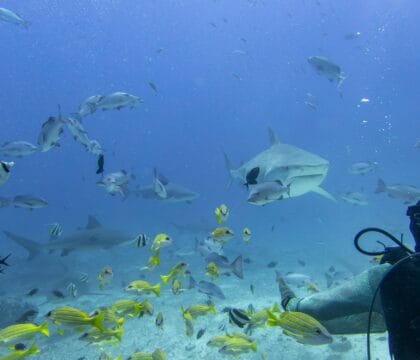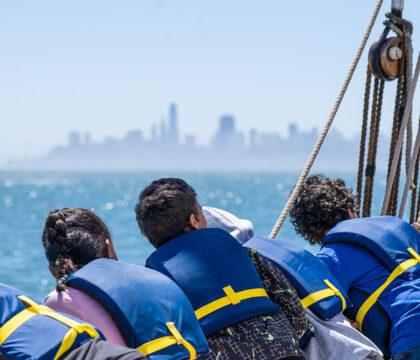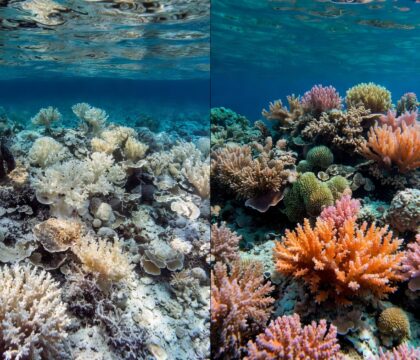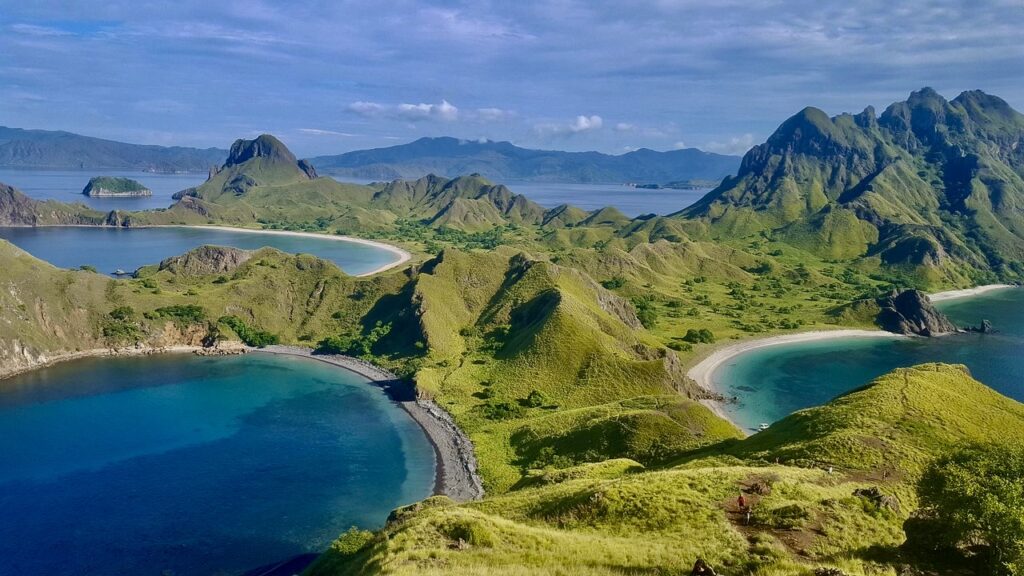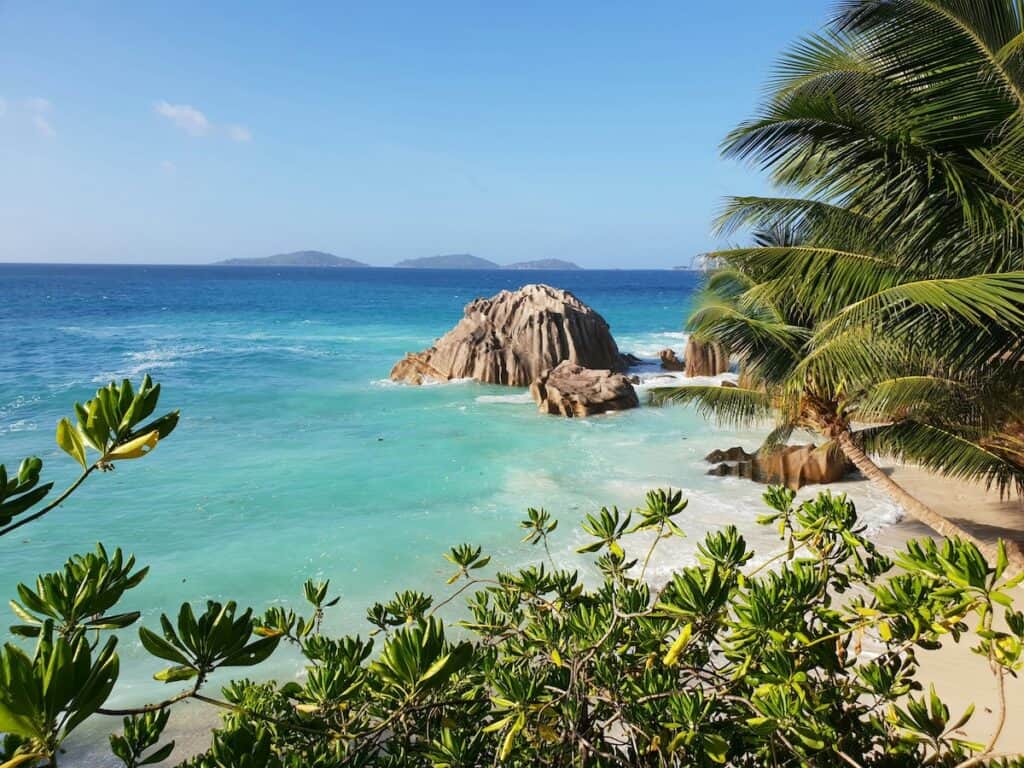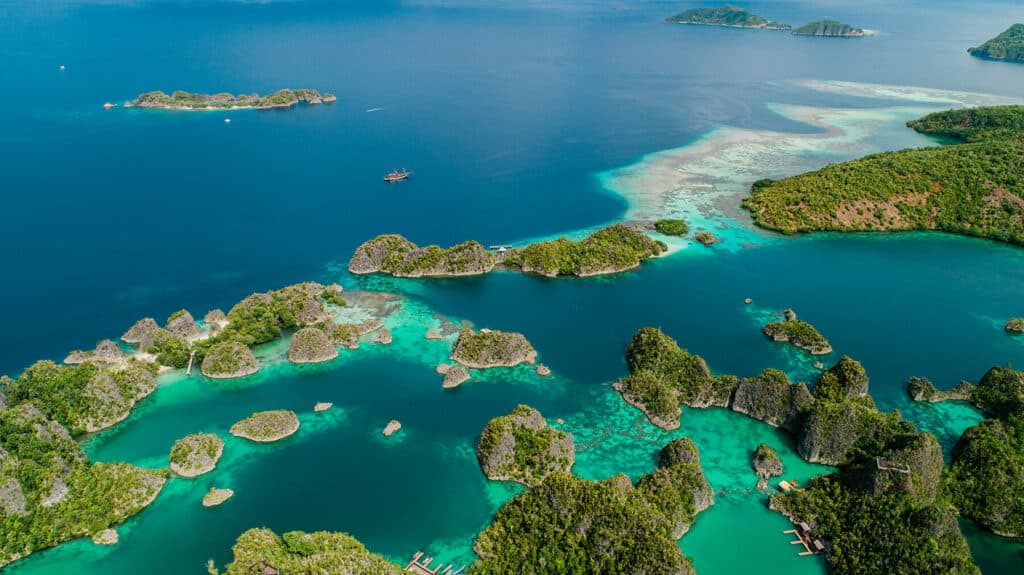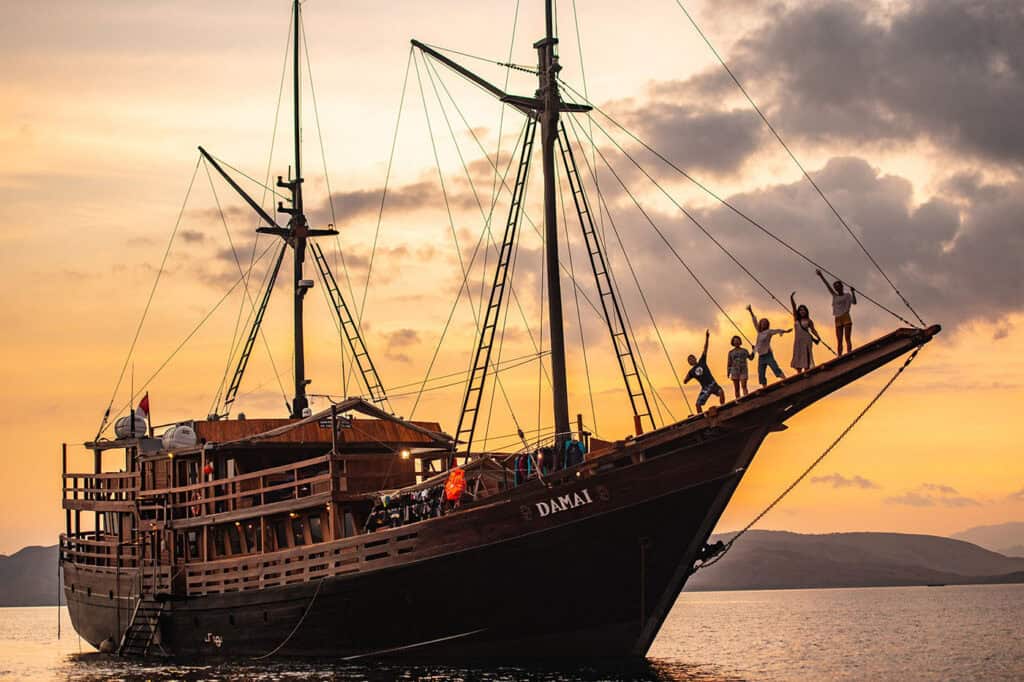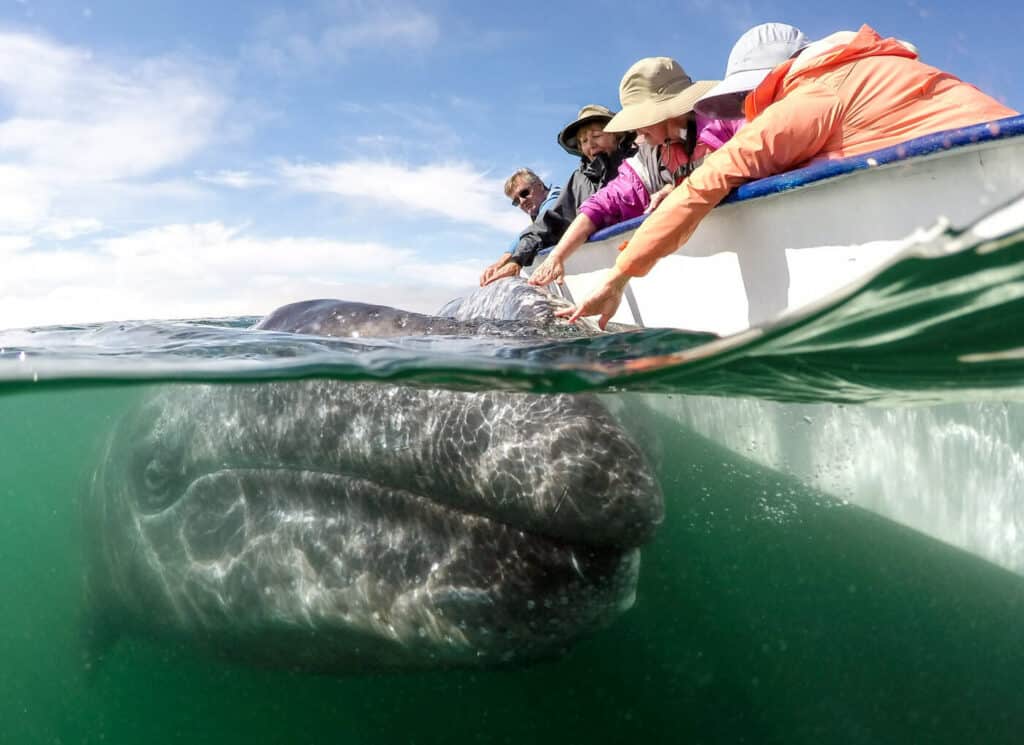May 12, 2022 • Travel Ideas
If you are a frequent nature traveler or ocean lover, you’ve likely come across the name Raja Ampat, Indonesia in recent years. In fact, you’ve probably seen it mentioned in Oceanic Society’s Expeditions Catalog, in our blog posts, and on our social media profiles. If you are not among the few people lucky enough to have visited Raja Ampat, you may be wondering: what’s the big deal? We’re here to fill you in.
And if you’re ready to experience this underwater paradise for yourself, sign up to join one of our Raja Ampat snorkeling trips.
Here are 9 reasons why we think Raja Ampat belongs on every nature lover’s bucket list:

Raja Ampat is home to some of the world’s highest marine species diversity. © Pete Oxford
1. The World’s Highest Marine Biodiversity
Raja Ampat is located at the heart of the Coral Triangle region, home to the greatest diversity of marine species recorded anywhere on Earth. This fact will become obvious during your first forays into the water here!
New species are still being discovered regularly here, adding to the already impressive totals—more than 1,400 fish species and 550+ species of reef-building corals (75% of the world’s coral species) are found here. Just look at all the species in the photo above! For comparison, there are 62 stony coral species found in the Caribbean Sea.
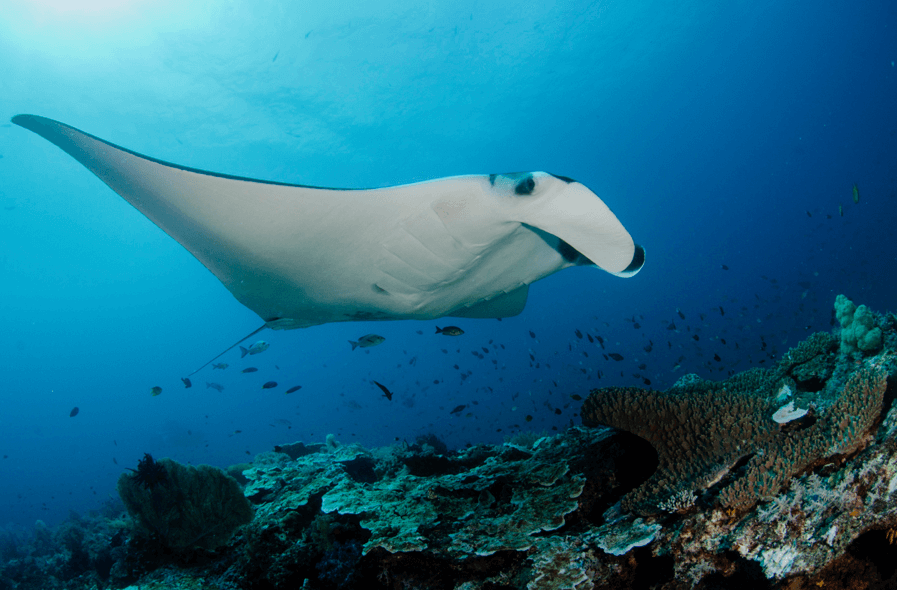
Megafauna, like this manta ray, are a frequent sight in Raja Ampat. © Pete Oxford
2. Abundant Megafauna
A highlight of every visit to Raja Ampat is the high likelihood of encountering large, charismatic species like sea turtles, manta rays, whale sharks, and whales—known collectively as megafauna. Raja Ampat is home to 17 species of marine mammals, including orcas, sperm whales, Bryde’s whales, and others, as well as 5 sea turtle species, and many superlative sharks and rays, including massive whale sharks. This is due, in part, to the fact that many of its shallow water habitats, where snorkeling and diving are good, are near deep waters where megafauna are present. Moreover, these waters are remote, protected, and biologically productive, making it one of the best places to encounter wild megafauna while snorkeling, diving, and cruising.

Anna’s chromodoris is one of hundreds of exciting macrofauna species in Raja Ampat. © Pete Oxford
3. Mind Blowing Macrofauna
For experienced snorkelers and divers, looking for the little critters on and around the reef—often called macrofauna—is an extremely fun and rewarding challenge. Raja Ampat boasts a breathtaking array of macro life, including hundreds of colorful and unusual nudibranch species, at least five species of pygmy seahorse, pipefishes, several frogfish species, tiny blue-ringed octopuses, incredible mollusks, many shrimp including the famed mantis shrimp, colorful wrasses, blennies, and other small fish, and so much more. It is both a diehard macro lover’s dream and the type of place that will turn you into a macro fanatic!

Raja Ampat’s shallow coral reefs make for excellent snorkeling. © Pete Oxford
4. Thriving Reefs, Warm Water, Great Visibility
There are relatively few places left in the world where you can enjoy find healthy, vibrant coral reefs that show little sign of human impact. Raja Ampat, though not entirely untouched, provides a rare opportunity to see reefs that look like those Jacques Cousteau likely encountered during his legendary explorations just a few decades ago. The reefs here have even been found to be naturally resilient to coral bleaching, a side effect of climate change that is plaguing reefs worldwide. Moreover, warm water temperatures (80-86˚F) and great visibility (averaging 50-100 feet) make for an outstanding in-water experience.

A snorkeler observes a whale shark in Raja Ampat. © Pete Oxford
5. Extremely Cool Sharks
There are sharks that can walk on land, and you can see them here. Need we say more? There are also wobbegong sharks—bottom-dwelling kings of ambush that have otherworldly, fringed mouthparts. Not to mention whale sharks (the largest fish on Earth), whitetip and blacktip reef sharks, gray reef sharks, and several other species that are readily found here. With Raja Ampat having been declared a sanctuary for sharks and manta rays in 2013, the opportunity to see these wonderful animals will be assured well into the future.

Soft corals seem to glow in the sunlight in Raja Ampat. © Pete Oxford
6. Awesome Diversity of Snorkel and Dive Habitats
As you traverse Raja Ampat it becomes immediately apparent that you will never run out of new and unique snorkel or dive sites to capture your attention. Raja Ampat offers shallow water reefs of 3 to 5 feet in depth where you can see large schools of bumphead parrotfish, as well as lush coral walls that gradually drop off from 5 feet to 900 feet! Beyond its reefs, this area boasts blue water mangrove habitats that serve as nurseries for many fish and crustacean species and are a labyrinth of multi-colored soft corals and sponges. Unlike most mangroves, they are surrounded by crystal clear water, allowing you to explore them in detail.

Raja Ampat offers breathtaking landscapes and relative solitude. © Pete Oxford
7. Breathtaking Landscapes, Few Tourists
Raja Ampat is one of the planet’s least traveled regions, and has one of the lowest population densities in all of Indonesia. It also features a dramatic geology, with jungle-covered islands of rugged, limestone karst that rise from blue waters. Sunrises and sunsets bring about breathtakingly beautiful color palettes of blues, greens, and pinks that stimulate the senses. Multiple islands offer short hikes that lead to wonderful vantage points, allowing you to fully appreciate these incredible surroundings. And the low number of visitors and residents leads to the peaceful experience of exploring these places in relative solitude—something that is harder and harder to find these days.
8. Unique Birds and Mammals, Many Found Nowhere Else
While our trips to Raja Ampat focus on the diversity found in the water, we also occasionally head on land to see the feathered and furred creatures of the island forests—as elaborately colored and adorned as any sea creature. A visit to the mating leks of the majestic Red Bird-of-Paradise is always a highlight. While there, you may be lucky enough to come across the spotted cuscus, a cat-sized, arboreal marsupial. On early morning outings to snorkel or dive sites, we are always on the lookout for massive Blyth’s Hornbills, Sulphur-crested Cockatoos, and the bright red and purple Eclectus Parrot, among other charismatic bird species.
9. Your Visit Helps Protect Raja Ampat
Much of Raja Ampat is protected as part of the Raja Ampat Marine Protected Area network of seven protected areas that cover 1,185,940 hectares (2,930,522 acres), and all of this region is a shark and manta ray sanctuary. Your visit as a snorkeler or scuba diver helps demonstrate the global importance and economic value of this special place when it is protected and used sustainably through tourism. The park fees you pay also provide direct support to conservation, and the money you bring to the region helps empower local communities to become conservation stewards.
Ready to Plan Your Raja Ampat Trip?
Check out our upcoming expeditions to Raja Ampat to start planning your trip today. For our full list of Expeditions, click here, or request a free copy of our Expeditions Catalog.
Special thanks to photographer Pete Oxford for the outstanding images used throughout this post, all of which were taken on Oceanic Society Expeditions in Raja Ampat.

